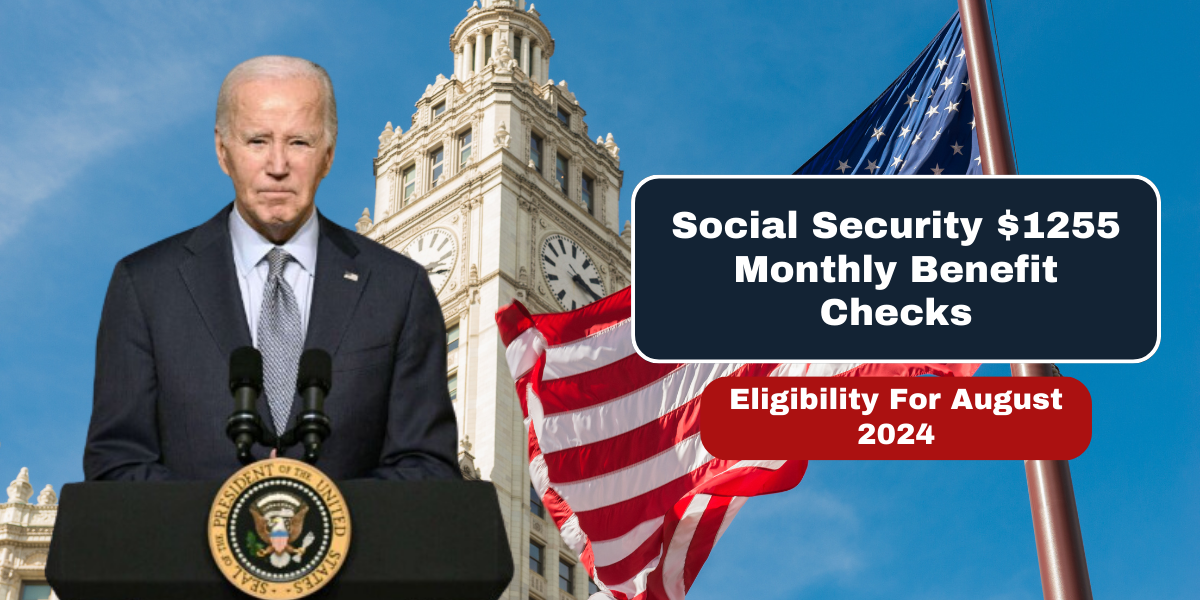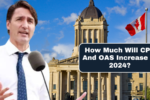$1255 Monthly Benefit Checks : As August 2024 nears, the proposal for Social Security $1,255 monthly benefit checks has generated considerable excitement. This initiative aims to standardize benefits, ensuring all eligible recipients receive a uniform payment of $1,255 per month, aligning with the federal poverty line. This could dramatically enhance financial stability for millions of Americans who rely on Social Security.
The proposal’s potential impact includes reducing poverty rates among seniors and providing crucial support for disabled individuals. By establishing a minimum benefit, the plan addresses concerns about the adequacy of current payments. However, its implementation will face challenges related to funding and administrative adjustments, which policymakers will need to address to make the proposal a reality.
Contents
Understanding the $1255 Monthly Benefit Proposal
The $1,255 monthly benefit proposal aims to establish a uniform Social Security payment, guaranteeing that all eligible recipients receive at least $1,255 per month. This standardization is designed to provide a basic level of financial support that aligns with the federal poverty line, addressing concerns about the adequacy of current Social Security benefits.
By setting a minimum benefit threshold, the proposal seeks to enhance financial stability for vulnerable groups, including seniors and disabled individuals. This initiative is intended to reduce poverty and improve the quality of life for those who rely on Social Security, although its successful implementation will depend on overcoming funding and administrative challenges.
What Is the $1,255 Monthly Benefit Proposal?
The $1,255 monthly benefit proposal suggests implementing a standardized minimum Social Security payment of $1,255 per month for all eligible beneficiaries. This amount is intended to match the federal poverty line, providing a safety net to ensure that no recipient’s benefits fall below this threshold.
Key Points:
- Standardized Amount: $1,255 per month.
- Alignment: Pegged to the federal poverty line.
- Adjustment: Payments adjusted annually based on inflation.
Why Is This Proposal Being Considered?
The proposal addresses concerns over the adequacy of current Social Security benefits, which for many, do not meet the basic cost of living. By establishing a minimum benefit, the proposal aims to reduce financial insecurity among seniors, disabled individuals, and other vulnerable groups.
Reasons for Consideration:
- Poverty Reduction: To help beneficiaries meet essential living expenses.
- Equity: Ensures a basic standard of income for all recipients.
- Support: Provides additional aid to low-income and disabled individuals.
Key Aspects of the $1,255 Monthly Benefit Proposal
I. Minimum Benefit Floor
The proposal centers around creating a minimum benefit floor. This ensures that all Social Security recipients receive at least $1,255 per month. The benefit floor is aligned with the federal poverty line, which is adjusted yearly to reflect inflation.
Highlights:
- Universal Coverage: All eligible Social Security recipients.
- Annual Adjustment: Benefits will increase with inflation.
- Financial Security: Aims to reduce poverty among retirees and disabled individuals.
II. Flattening Benefits
Flattening benefits involves adjusting the benefit formula so that lower-income earners receive a higher percentage of their pre-retirement income as benefits, while higher-income earners receive a lower percentage. This approach is designed to provide more support to those who need it most.
Features:
- Equitable Support: Greater benefits for lower-income earners.
- Adjustments: Shifts the benefit distribution to favor those with lower pre-retirement earnings.
- Objective: To bridge the gap between Social Security payments and living costs.
III. Adjustments for Inflation
The proposal includes provisions for automatic adjustments based on changes in the federal poverty line. As inflation affects the cost of living, the minimum Social Security benefit will also be adjusted to ensure it remains effective in reducing poverty.
Details:
- Inflation Adjustment: Automatic yearly increases.
- Cost of Living: Ensures benefits keep pace with rising expenses.
- Financial Stability: Reduces the risk of poverty over time.
Potential Impact of the $1,255 Monthly Benefit
I. Reducing Poverty Among Seniors
One of the most notable impacts of this proposal is its potential to significantly reduce poverty rates among seniors. By guaranteeing a minimum benefit that meets or exceeds the federal poverty line, this proposal could provide a crucial financial safety net for retirees who currently struggle with low benefits.
Benefits:
- Financial Safety Net: Ensures a minimum standard of living.
- Reduced Poverty: Helps address the issue of poverty among seniors.
- Increased Security: Provides greater financial stability for retirees.
II. Supporting Disabled Individuals
For those receiving Social Security Disability Insurance (SSDI) benefits, the $1,255 monthly benefit could offer substantial relief. Many SSDI recipients currently receive payments below the poverty line, making it difficult to cover essential expenses such as healthcare and housing.
Advantages:
- Increased Support: Provides much-needed financial assistance.
- Improved Living Conditions: Helps cover essential expenses.
- Enhanced Quality of Life: Reduces financial stress for disabled individuals.
III. Economic Implications
Implementing a standardized $1,255 monthly benefit could have broader economic implications. By increasing disposable income for millions of beneficiaries, the proposal could stimulate consumer spending, particularly in sectors like housing, healthcare, and retail, potentially benefiting the overall economy.
Economic Effects:
- Consumer Spending: Boosts spending in various sectors.
- Economic Growth: Potential positive ripple effects throughout the economy.
- Stimulus: Acts as an economic stimulus through increased purchasing power.
Challenges and Considerations
I. Funding and Sustainability
One of the major challenges of the $1,255 monthly benefit proposal is the cost of implementation. Providing higher benefits to millions of recipients requires substantial funding. Policymakers must address how to finance this program, whether through increased payroll taxes, reallocation of federal funds, or other methods.
Issues:
- Funding Sources: Need for significant financial resources.
- Sustainability: Ensuring long-term viability of the program.
- Policy Debate: Discussions on financing methods.
II. Administrative Challenges
Implementing a new benefit structure involves logistical and administrative challenges. Adjusting the benefit formula, ensuring accurate payments, and handling increased administrative tasks are critical considerations for the Social Security Administration.
Administrative Points:
- System Updates: Need for changes in payment processing systems.
- Efficiency: Ensuring smooth implementation.
- Oversight: Monitoring and managing the new benefit structure.
Conclusion
The proposal to implement a $1,255 monthly benefit check for all Social Security recipients represents a significant shift in how benefits are calculated and distributed. By setting a minimum benefit aligned with the federal poverty line, this proposal aims to enhance financial security for millions of Americans.
Despite the potential benefits of reduced poverty and increased support for vulnerable populations, the proposal faces challenges related to funding and administration that must be addressed by policymakers.
FAQs
What is the purpose of the $1,255 monthly benefit proposal?
The $1,255 monthly benefit proposal aims to establish a minimum Social Security payment that aligns with the federal poverty line, ensuring that all eligible beneficiaries receive a basic level of financial support.
Who qualifies for the $1,255 monthly benefit?
To qualify for the $1,255 monthly benefit, individuals must meet specific eligibility criteria, including being 65 years or older, having contributed to Social Security for a minimum of 10 years, being a U.S. citizen or resident, and having earned at least 40 credit points.
How will the $1,255 benefit be adjusted for inflation?
The $1,255 benefit will be automatically adjusted based on changes in the federal poverty line, which is updated annually to reflect inflation and changes in the cost of living. This adjustment ensures that the benefit maintains its effectiveness in reducing poverty.






